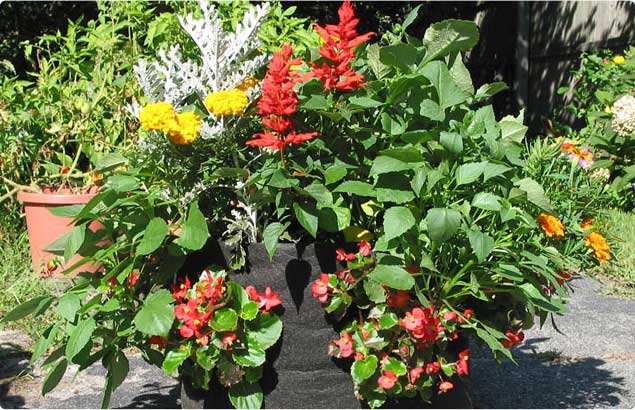Start Your School Garden with Fabric Pots
A popular trend is gaining momentum across America. In communities coast to coast, school gardens are springing up. Student gardens provide a cornucopia of educational benefits — not to mention delicious vegetables for students and their families. Here are just a few of the perks they provide:
Strong Social and Emotional Skills — Collaborating on student gardens improves maturity, communication skills and personal responsibility.
Healthy Eating Habits — Kids who grow their own veggies have a greater appreciation for nutrition.
Academic Achievement — Gardening is a great method for getting kids interested in science. Students with gardening in their curriculum show greater gains in scientific achievement.
4 Benefits of Using Fabric Pots
Starting a student garden can be a huge undertaking. The construction phase alone is often painstaking and time-intensive. Here are four ways fabric pots will make your life easier:
Forget About Construction — Take a quick look around the web. Most school gardens are built in greenhouses or fixed, raised beds. With fabric pots, you can leapfrog the construction phase and get right into cultivation.
Save a Chunk of Change — At a time when school budgets are razor-thin, securing funds for raised beds or greenhouses can be daunting. Fabric pots offer an affordable, scalable alternative. Is funding scarce? Start small and grow your school garden over time.
Enjoy Ultimate Flexibility — Situated above ground-level, fabric pots are highly mobile. They can be transported, sheltered or reconfigured to accommodate changing conditions. Need extra space on the playground? Slide your pots out of the way. Severe weather on the horizon? Move your plants inside to keep them safe and sound.
Supercharge Your Science Curriculum — Fabric pots are scientifically designed to promote optimal root structures and hardy plants. Their breathable fabric delivers oxygen to roots while maintaining ideal soil moisture levels. It’s a great opportunity to teach students the principles of botany and plant biology.
Want a quick, easy experiment? Compare plants grown in plastic pots to specimens grown in fabric pots. Have students chart the differences in growth rates, plant size and vegetable yields. (Spoiler alert! Fabric pots are vastly superior!) Hands-on learning in a school garden is an awesome way of getting kids interested in science.
Psyched About Fabric Pots?
Put Health and Safety First.
When you’re growing vegetables for students and families to eat, safety is a top priority. It’s important to buy fabric pots that won’t leach harmful chemicals into the soil.
Ready. Set. Grow!
School gardens provide powerful social and academic benefits to students of all ages. They deliver access to fresh, healthy, affordable food to kids and their families. And they bring teachers, administrators, and parents together to help students succeed. So… What are you waiting for? Start planning your school garden today!






